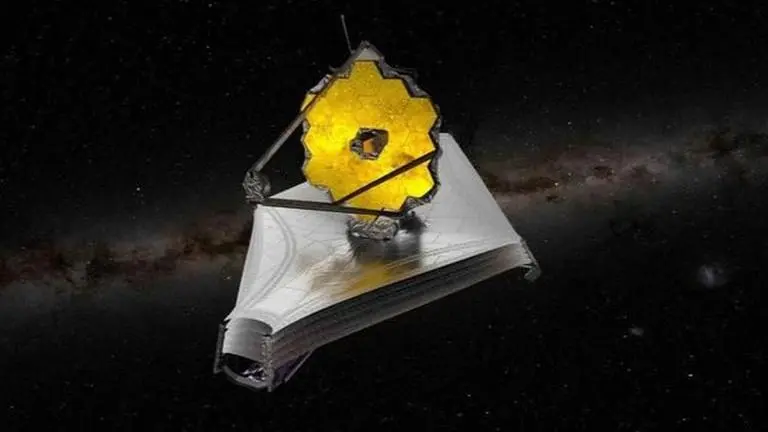Updated 31 July 2022 at 21:15 IST
James Webb Space Telescope surprises scientists; fulfills task it isn't designed for
James Webb Space Telescope has photographed a suspected supernova that resides in a galaxy located between 3 to 4 billion light-years away from Earth.
- Science News
- 3 min read

Astronomers are currently geeking out over the James Webb Space Telescope which has accidentally discovered what is believed to be a supernova, a dying star that underwent a massive explosion. Astronomer Mike Engesser of the Space Telescope Science Institute (STScI), one of the operators of Webb told Inverse, "We suspect it's a supernova", adding that Webb has spotted what the Hubble space telescope failed to do.
(Supernova imaged by Webb telescope as a small dot in the two images below; Image: Space Telescope Science Institute)
Hubble too had once observed the galaxy named SDSS.J141930.11+5251593 in 2011. "We would need more time series data to make a determination, but the data we do have does match that of a supernova, so it's a very good candidate," Engresser said as per Inverse.
More about the surprise discovery
This discovery is extremely significant because this is the first (suspected) supernova located by Webb although the telescope is not designed for this task. For the unversed, Webb is designed to scan just a small portion of the sky, for example, the telescope's first deep field image covered a sky area just about the size of a sand grain held at arm's length. On the other hand, tasks such as finding dying stars are usually performed by large ground-based telescopes that scan a larger portion of the sky.
Advertisement
Engresser revealed that the galaxy housing the supernova was observed twice by Webb five days apart and managed to photograph this event.
A supernova occurs when a star reaches its end stage after its fuel runs out. When this happens, the star collapses under its own gravity, which is followed by a powerful explosion that releases immense radiation into outer space. NASA says that a supernova is the biggest explosion humans have ever seen. Interestingly, all this happens in just a matter of seconds but the brightness created after the explosion lasts for a few days or even months and it can outshine the entire galaxy itself.
Advertisement
The galaxy housing this potential supernova is believed to reside between three to four billion years ago, meaning the light from that galaxy took the same amount of time to reach Webb. Besides, the dead star was found using Webb's Near-Infrared Camera (NIRCam) to scan the patch of sky previously done by Hubble. As for the importance of this discovery, the astronomers said that it would help them understand the process of cosmic expansion over time.
Image: ESA
Published By : Harsh Vardhan
Published On: 31 July 2022 at 21:15 IST

